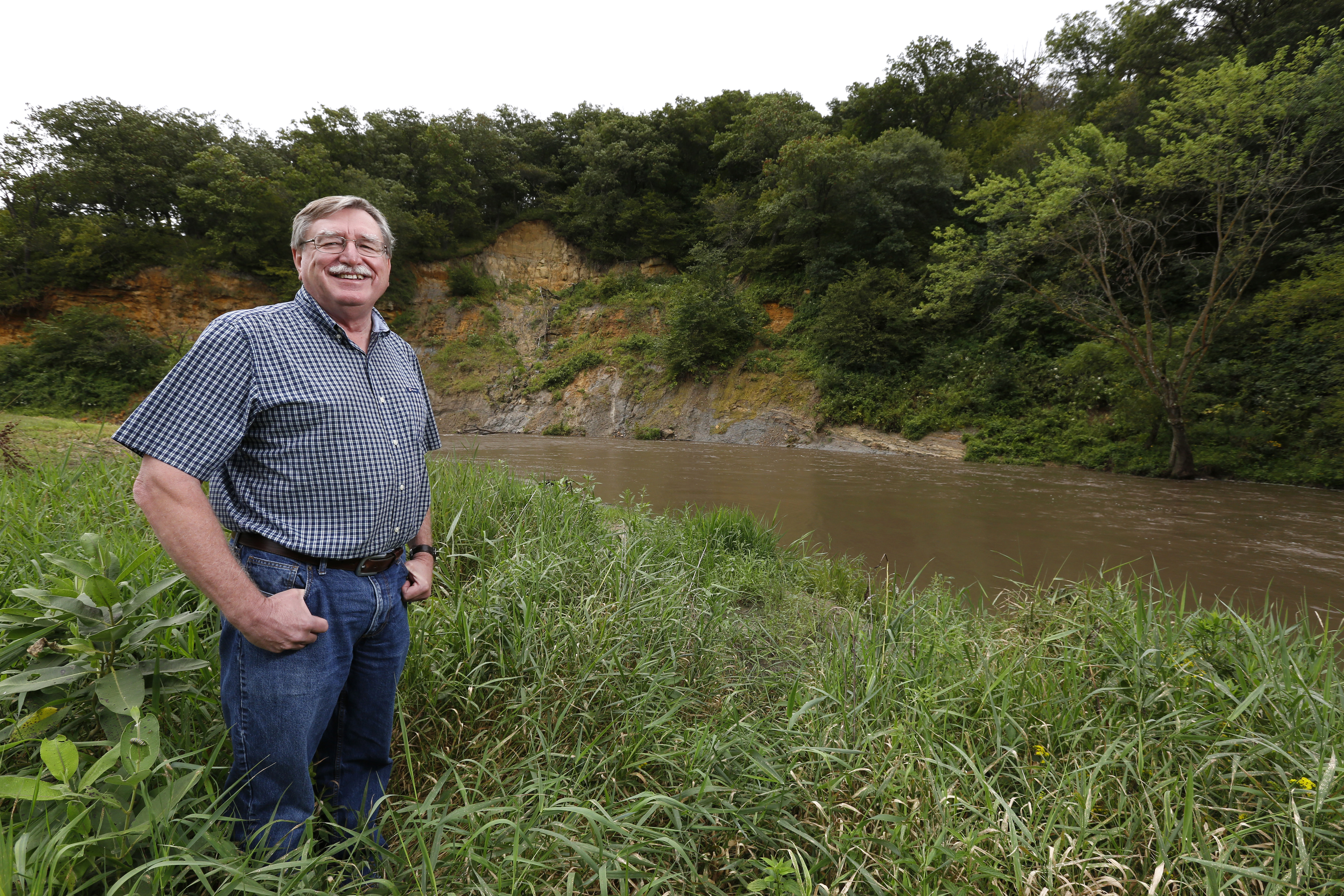
Providing Venture Capital for Conservation
Farmers are great entrepreneurs, taking risks, using resources and knowledge to produce something people need. That same entrepreneurial spirit helps farmers protect Iowa’s soil and water.
That’s how Mark Rasmussen sees the role of Iowa State University’s Leopold Center for Sustainable Agriculture. The center that he’s directed since 2012 is a place to find venture capital for research, particularly for nutrient management and water quality.
“I see the Leopold Center as a source of seed money to explore innovative ideas that can lead to bigger projects,” Rasmussen explains. “Our strong point is that people from divergent disciplines can approach a problem and test different solutions, which is really important when you’re talking about something like water quality.”
Created in 1987 by the Iowa Groundwater Protection Act, the Leopold Center owes its existence to the quest for better water quality. The Iowa Legislature outlined a three-pronged mission for the new center: identify and reduce adverse impacts of farming, develop profitable farming systems that conserve natural resources and work with ISU Extension and Outreach to share results. Legislators also directed the new center to conduct an expansive research program that went beyond water quality including productive soil, viable rural communities, marketing, safety and health.
As a result, the center has supported pioneering work on sustainable farming practices such as riparian buffers, cover crops, crop rotations, prairie conservation strips, no-till and rotational grazing. Since its inception, the center has funded 94 nutrient management-related projects with an investment of more than $5.3 million.
Every $1 of investment generated $7.16 to support related research and activities.
Rasmussen is not a newcomer to entrepreneurship. A microbiologist with an MBA, he has led research and commercialization on imaging technology at the National Animal Disease Center in Ames. He holds four patents useful to the livestock industry.
“You may finance 10 things and maybe only one will present a workable solution, but you always gain knowledge and in that way every project succeeds,” he says. “At the Leopold Center we’re not necessarily looking for some widget to invent but a way of doing things that will bring sustainability to Iowa agriculture.”
Rasmussen points to successes that can be traced to center support.
Research in the early 1990s showed the best time to test soil for nitrogen was in late spring, leading to development of a soil test kit giving farmers immediate results. The center also put research dollars in corn gluten meal, a natural
weed suppressant, and in more efficient anhydrous ammonia application. The latter project led to a product that the American Society of Agricultural Engineers named one of the top “best new products and technologies” over 20 years.
One early investment is still yielding valuable insights. Some of the first funds awarded in 1988 paid for a state-of-the-art water quality monitoring system at the ISU Northeast Research and Demonstration Farm near Nashua.
The site has 36 one-acre plots, each with its own subsurface drainage system that can isolate water samples for analysis. Combined with more than two decades of records on tillage and cropping practices, these plots give researchers a precise look at how nutrients, chemicals and pesticides move through groundwater.
These plots have been used for three major water quality studies, also funded by the Leopold Center. The initial project was a 13-year investigation into the impact of liquid swine manure applications on surface and groundwater quality, resulting in better methods and timing of applications. Since 2006, the plots also have been used to compare cropping systems and management practices with stover removal, no-till and cover crops among
the variables studied. Woodchip bioreactors got their first test from 2009 to 2012.
Currently, researchers are using the plots to learn how antibiotic-resistant pathogens in swine manure applications persist and move underground.
The Iowa Nutrient Reduction Strategy, launched in 2013, cites an extensive body of scientific literature, much of which received funding from the Leopold Center. More than 80 percent of the practices listed in the strategy were informed by centerfunded research.
Like most entrepreneurial efforts, some research requires years before reaching fruition. It was 1990 when USDA
agronomist Tom Kaspar received his first research grant from the center to study cover crops. Kaspar now works with farmers throughout Iowa on cover crops.
“It takes time for changes like this to take hold, it can be a generational thing,” Kaspar observes. “On the other hand, some farmers always have made soil conservation a priority. The same farmers who were interested in no-till are the ones trying cover crops.”
He credits the center’s interest in cover crops for bringing Iowa into the Midwest Cover Crops Council, even providing startup funds for a half-time coordinator. Center staff also helped him organize the
first cover crop conference in Iowa in 2010, attracting 120 people from 13 states. In 2015, the same meeting was attended by almost 350 people.
Rasmussen says one thread running through 28 years of center research has been a concern for soil health, an important part of the land ethic proposed by Iowaborn conservationist Aldo Leopold.
“Leopold envisioned a balanced system of land-use that included farming, forestry, wildlife habitat and many other values,” Rasmussen says. “We try to follow that. In looking at all the practices and projects that have emerged, how many would never have happened without the Leopold Center?”



